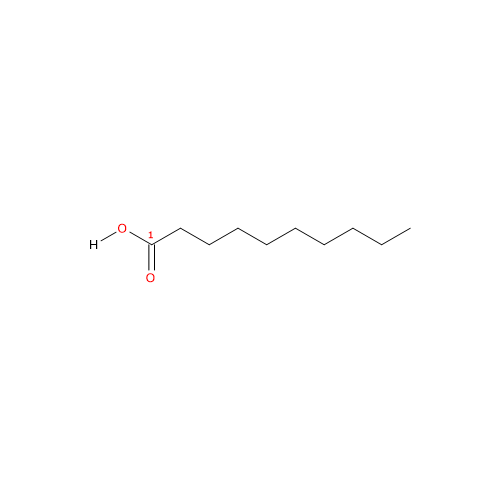Capric acid, a carboxylic acid with a 10 carbon chain, belongs to the group of saturated fatty acids, as it has no double bonds in the aliphatic chain, so its shorthand notation is 10:0. It is a member of the group called medium chain fatty acids or MCFA, namely, fatty acids containg from 6 to 12 carbon atoms.
It is named from the Latin word caper, meaning goat.
PROPERTIES
Molecular weight: 172.2646 g/mol
Molecular formula: C10H20O2
IUPAC name: decanoic acid
CAS registry number: 334-48-5
PubChem: 2969

In purified form it is a crystalline solid insoluble in water with melting point at 31.4 °C (88.52 °F; 304.55 K) and boiling point at 270 °C (518 °F; 543.15 K) at 760 mmHg.
OTHER NAMES
n-decanoic acid
decylic acid
n-capric acid
caprinic acid
decoic acid
caprynic acid
n-decylic acid
n-decoic acidacid
10:0
Food sources of capric acid
It occurs as glycerol ester in animal fats like those present in goat and cow butter, and plant oils like coconut oil.
The unpleasant odor reminiscent of goats is due to its free hence also his name.
References
- Akoh C.C. and Min D.B. “Food lipids: chemistry, nutrition, and biotechnology” 3th ed. 2008
- Chow Ching K. “Fatty acids in foods and their health implication” 3th ed. 2008